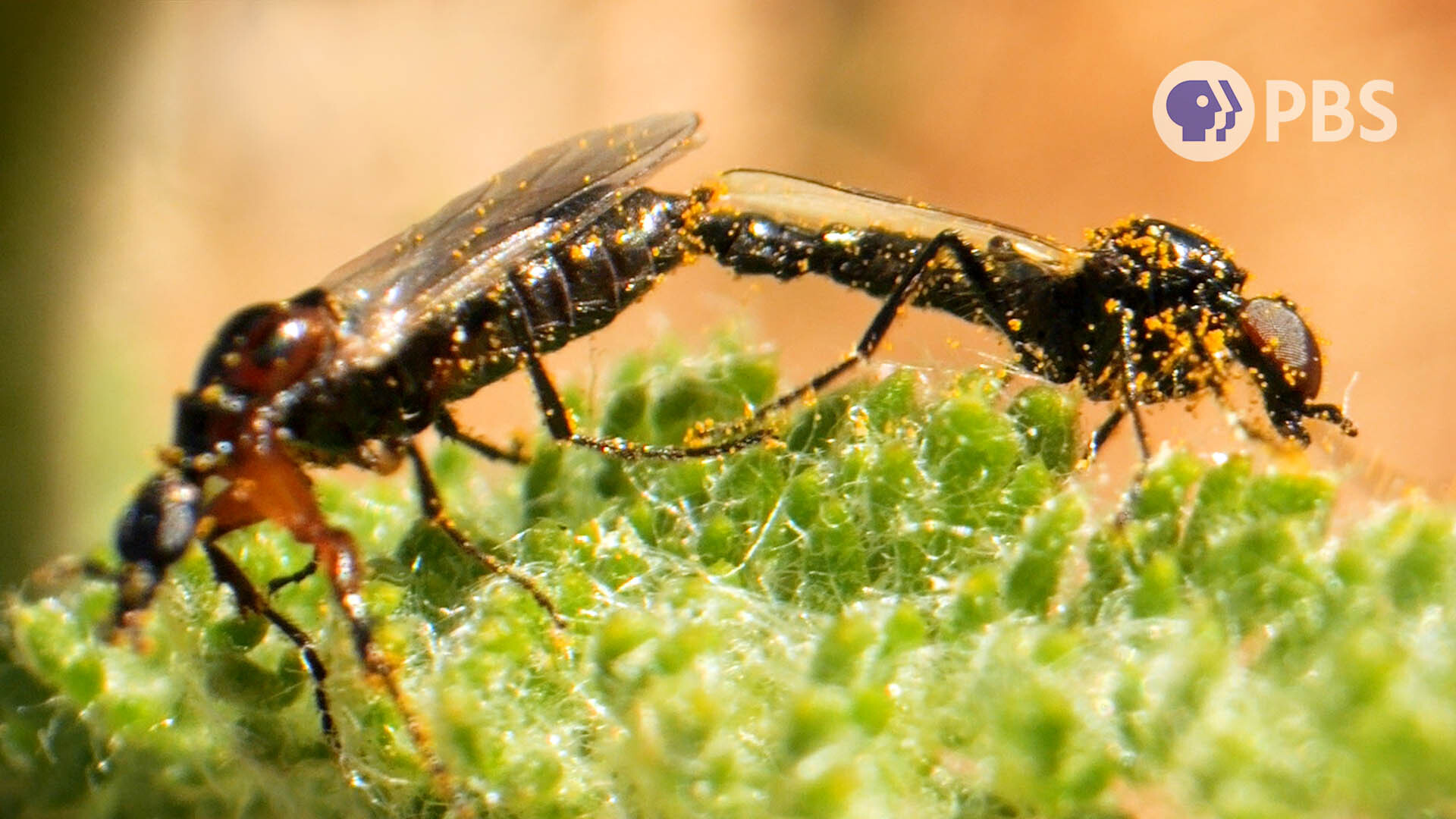
"Their love story starts in a massive crowd. A raucous singles mixer. They're old friends. They grow up together as maggots underground. Then they take flight all at once, in what's called synchronous emergence. In some places this happens in spring, which is why they're also known as march flies. Males and females look pretty different. He has holoptic eyes. See how they meet at the top of his head?"
"But maybe a flower is a less chaotic place to look for her ... if he can get through the competition. And we've got a winner! She carries him around piggyback style. Hang on, buddy. There's no guarantee he won't be replaced by another male. The reigning champ curls his backside towards hers, and they hook onto each other. Then, he flips his body over and around. Wait, who's driving?"
Many flies emerge synchronously from underground as adults, forming large mating swarms often in spring. Males and females show sexual dimorphism: males have holoptic eyes giving near-360° vision to locate females within chaotic swarms. Males compete for females, sometimes searching on flowers where competition is intense. Successful males cling to females piggyback style; courtship includes hooking and body-flipping to achieve copulation. Prolonged attachment acts as mate guarding, preventing other males from mating and increasing paternity. While feeding on nectar during and after mating, these flies transfer pollen and pollinate ornamental plants, fruit trees, and even plants like poison oak.
Read at Kqed
Unable to calculate read time
Collection
[
|
...
]